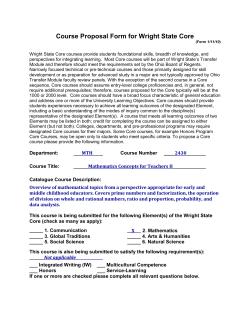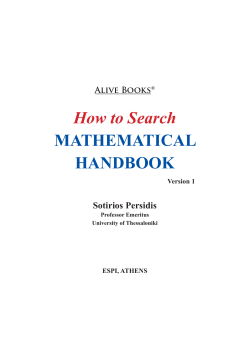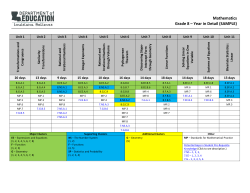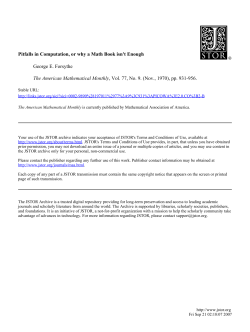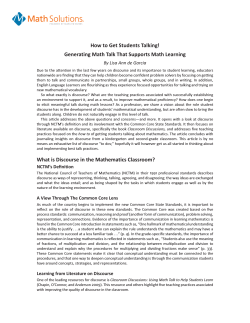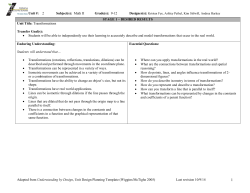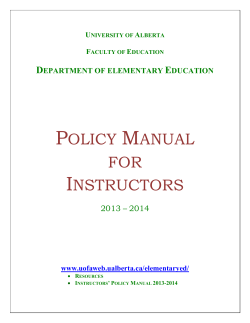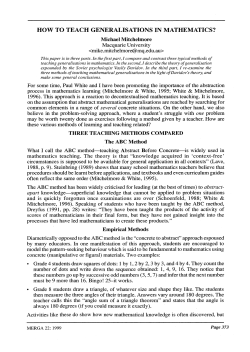
How to Survive Your College Math Class
How to Survive Your College Math Class (and Take Home Something of Value) Matthew Saltzman and Marie Coffin Department of Mathematical Sciences Clemson University Draft: August 25, 1998 1 Introduction After several years of teaching, instructors notice that student comments take on a certain sameness: “I’m not very good at math.” “I need help with the homework—I don’t know where to start.” “I’m a right-brain person.” Although it is true that everyone is born with different skills and abilities, it is also true that most people (especially those already enrolled in college) have the ability to learn new things and acquire skills that they never had before. No one is born knowing how to play the piano, fix the plumbing, or fly an airplane. Many of us never acquire these skills. But most of us realize that we could acquire these skills if we were willing to put in the work required to learn them. Not everyone can be a concert pianist, but nearly everyone could learn to play a few songs, with lessons and practice. So too with mathematics. Not everyone can discover a new mathematical theory, but nearly everyone of college potential can learn to use mathematical tools with facility and confidence. When someone tries to learn volleyball or ballroom dancing for the first time, they often feel confused and clumsy. There is too much going on at once, and it’s hard to know which mistake to fix first. A good coach can help by teaching one skill at a time, and then showing the student how all those skills fit together. If you sometimes feel that too much is going on at once in your math class, these notes can help. We have tried to break the process of learning mathematics down into small skills, and then show how they all fit together to make you a successful user of mathematics. 1 What follows is divided into two parts. The first part covers some general study skills (specialized where appropriate for math classes). The second part is a tutorial on reading and writing in the specialized (but not necessarily difficult) language of mathematics. If you apply these skills diligently, you should be able to complete your math class successfully, with relatively little pain, and maybe even learn something in the process. 2 Study Skills 2.1 Reading Your Textbook Math books have a specialized style that you need to understand in order to get the most out of them. This style goes beyond just technical terms to cover the whole presentation and the framework of arguments. Here are some hints for following along. A mathematical argument, or derivation, is a sequence of logical or mathematical steps that lead inarguably from some assumptions to some conclusion. Once the derivation is complete, we can re-apply the conclusion in any situation in which the assumptions hold. The argument may involve an equation or sequence of equations (on multiple lines). 2.1.1 Read Twice (at Least) Don’t expect to fully grasp the material in your math text on the first pass. Even the very best professional mathematicians don’t just read a text once. It may take you two, three, or more passes through the material to really understand it all. 1. Read once to get the main ideas. Don’t try to understand every line of a multi-line derivation, but look at the start and the end to see what the derivation accomplished. Do read the main results and formulas carefully to make sure you understand what they say. 2. Read a second time, with the intention of understanding everything. Sit at a desk with a pad of paper. As you read, stop at each technical term and recall the definition. When you come to an equation, translate the symbols in it based on their definitions. Write in words what the equation says in symbols. When you encounter a multi-line derivation, figure out what steps were performed to go from line to line. Write out any intermediate steps that seem to be missing. (Authors often perform a couple of steps at a time in derivations, if they 2 think the steps are simple and clear enough. If you don’t agree, fill them in yourself. Soon, you’ll be able to follow most of the multi-part steps quite easily.) 3. Read one more time to review the main ideas. This time, if your second reading was successful, you will be able to pass lightly over the derivations, but with understanding. These are general study hints. In Section 3, we will discuss the structure of a mathematical argument and how to follow it. 2.1.2 A Note on Highlighting The use of highlighting or underlining in math textbooks seems to be of very little value. Unlike books in many other fields (especially non-textbooks), math texts generally use page layout very effectively to emphasize important points. For example, theorems (the important mathematical facts) and definitions are usually set off from the body of the text and labeled Theorem or Definition. Equations are often set off in a display, and important formulas may be further identified by a box or a colored background, making highlighting redundant. It is surprising how many used textbooks can be found in which each theorem and each formula, already clearly marked off by the author’s use of whitespace, is again highlighted by some diligent student who identified it as an important point worth remembering. In fact, highlighting can be self-defeating. It is possible that by highlighting a passage or a formula, you will subtly trick yourself into thinking that you actually remember and understand it. In reviewing, you may pass over highlighted text with a quick acknowledgment that it is important, but fail to cement your understanding of the point. In general, there are better techniques for absorbing the material in a math book than highlighting. 2.2 Taking Notes In note-taking, it is often the case that less is more. It is not possible to transcribe every word the instructor says, nor every word he writes on the board, nor should you attempt to do so. Class time should be devoted to an exchange of ideas among the students and the instructor. If you are actually paying attention (this is sometimes called “active listening”) in class, you will not need a transcription of everything that occurred. One of the reasons you have a textbook is that it already provides a record of many of the ideas 3 and examples that will be presented in class. Since you have already paid for an expensive printed copy of that material, there is no need to acquire a hastily hand-written copy as well. You can facilitate good note-taking by spending a few minutes before class reading through the material that will be covered. Do not try to absorb every detail; try to assimilate the main ideas and glance through the examples. Make a marginal note of anything you don’t follow. If at all possible, bring your book with you to class, and have it open to the relevant page(s) during the lecture. If you find, for example, that the teacher is working the same example that is in the book, there is little to be gained by providing yourself with two copies of the same thing. Instead, try to listen and pay attention. Do you now understand the parts that didn’t make sense before? If not, ask about them. Similarly, if you find that the instructor is writing down a definition or theorem that is already in the book, there is no need for you to write it down again. Instead, listen and try to understand. We have often noticed that students start taking copious notes when they get lost during lecture. The attitude seems to be that if they can’t understand the ideas, the least they can do is write them down and hope to achieve understanding later. Unfortunately, the determination to record every detail is in itself an impediment to thinking and learning. When you do not follow the lecture, it is much better to ask a question than to become a scribe. In fact, if you have a question, it is likely that someone else in the class has the same question. You’ll be doing them and yourself a favor by speaking up. Incidentally, instructors rarely complain about students asking too many questions. It is much more common for teachers to express frustration over the lack of class participation. We are not, of course, suggesting that you take no notes at all. Many students find that the act of making an outline improves their memory of what was covered in class. In addition, if the instructor is covering material not in the text, or is taking radically different approach to solving the problem, you will want a detailed record. Listen to what the instructor says; some of spoken information belongs in your notes even though it is never written on the board. Class time should be a balanced mixture of listening, thinking, questioning, and note taking. If you find that you are devoting most of your class time to one activity and neglecting the others, we suggest you attempt to restore a balance. 4 2.3 Homework Your instructor will frequently assign homework problems to be turned in and graded. Contrary to popular belief, it is not the point of these assignments to delineate what you need to practice. Generally, homework assignments provide the instructor with a spot-check on your performance and provide you with some feedback on how you measure up to class standards. Practice varies widely among instructors, but in general, instructors in courses with large sections (more than about twenty students) do not have time to carefully check your performance on every problem that they think you ought to try. Often, instructors will suggest additional problems that do cover the full range of material you need to practice. If you don’t receive such hints, assume that all problems in sections assigned for reading are fair game. It is a good idea to work these problems in a notebook. Practice writing them up completely (as described below). Ultimately, it is your responsibility to practice on enough problems so that you feel in command of the material and ready to perform on an exam. If you need more practice, good sources of additional problems are other textbooks (from the library) or study guides such as Schaum’s Outlines. Most instructors are more than happy to answer questions (in class or office hours) that you might have about problems that you try beyond the assigned ones. In fact, you earn your instructors’ respect and attention if you let them know you are trying problems on your own. Many textbooks have worked examples that are similar to the homework problems. If you do not know where to start a problem, try to find an example that looks similar and use it as a guide. Be aware that you are using a crutch when you do this. You have not really mastered your homework until you can work the problems alone, without hints from the book. Make sure you understand the solutions thoroughly, and could (if called upon) explain why you did what you did. If you don’t understand, ask your instructor for help. It’s best to ask for help as soon as possible— since math courses typically build one concept on another, anything you don’t understand today will probably lead to further problems tomorrow. Students often wait to ask questions, hoping the difficulty will “clear up” on its own. This strategy rarely works. 5 2.3.1 Professionalism In most courses outside of mathematics, and in most jobs outside of college, it would be considered unacceptable to turn in handwritten first drafts on paper torn from spiral notebooks, with cross-outs, illegible scribbles, arrows pointing from one paragraph to the next, on several sheets attached by folding over the top corners. In math classes, we make an exception for handwritten solutions, because the time you would need to devote to using an equation editor is better spent learning the material. Beyond that, the same standards of professionalism apply to your homework. Take some pride in your product: Make a clean copy of your solutions on paper with clean edges, in order, written legibly, and stapled or clipped. Your instructor will be impressed. There’s an additional benefit to rewriting your solutions: you will learn the material better. Writing the solution over gives you the chance to write a description of the steps you followed to get the final answer. Doing so will help cement those steps in your mind so that you can recall them on an exam, when it counts. 2.3.2 How much to write The question often arises: How much detail should be included in a homework solution? The answer: enough, but not too much. Enough: Include enough detail to give your instructor a clear indication that you know how to solve the problem. Not too much: On the other hand, you don’t need to show every simple arithmetic operation. The solutions in the back of your textbook are there for you to check your final answers. They are not a good model for what to write—they are too brief. The solutions in separate student solution manuals are usually a pretty good model—they include the intermediate steps in appropriate detail as well as the final solution. As with any good writing, good mathematical writing requires you to decide who your audience is and write to communicate with them. Include steps that help your audience follow your argument; leave out steps that you are sure your audience can fill in for themselves. So who is your audience for homework problems? Hint: It’s not your instructor—he or she already knows how to solve the problem. A good guideline is to write for the person who sits next to you in class. You can assume your reader knows what you know (i.e., he’s1 read the same parts of 1 or she, of course. 6 the book), but that he doesn’t know how to solve the particular problem. A good solution is a short (one paragraph or so) essay on how to solve this problem. Sometimes you’ll need less (for purely mechanical problems), and sometimes you’ll need a bit more (for multi-step problems). Section 4 contains some additional advice on writing. 2.3.3 Working Together Studying in groups of two or three can be an enormous aid to learning, if done right. • Do discuss how to solve problems with your partners. • Do compare answers. If you disagree, talk about why, and keep at it until you come to a consensus. Everyone should feel confident in the solution. • Do write up your solutions on your own.2 This is the step where you solidify your knowledge. • Don’t be a free rider. If you find yourself copying solutions without understanding, you are not making effective use of your study group. • Don’t let your partners ride for free. It does them a grave disservice. 2.4 Studying for Exams Successful studying for math exams is somewhat different than successful studying in other courses. Mathematics exams typically emphasize skills and concepts, neither of which can be memorized the night before the exam. The single most important way to study for exams is to master the homework assignments as they are given. Prior to the exam, review all the relevant homework and pay particular attention to areas where you had trouble the first time. Work at least one problem of each type, to make sure you still remember how to do it. If you have trouble, review the concepts and work more problems of that type, until they are easily solved. Many textbooks have supplementary problems at the end of the chapters. Use these problems for additional review. If your textbook has chapter summaries, read the summaries. Make sure, in reading, that you actually recall each concept and can write a sentence or two summarizing it. If not, review that material. Imagine yourself explaining 2 Unless directed to turn in group work. 7 a concept to your roommate or study partner. Could you make the ideas clear? If not, you probably don’t really understand it. Review your notes. Notice how much time and emphasis is placed on particular concepts. Most instructors emphasize the same material on exams that they emphasized in class. Review in detail any material that was not covered in the text. Re-work any examples that you don’t remember well. If the idea of taking tests makes you nervous and you fear that you’ll “freeze up”, the best defense is practice in conditions that are as much like an actual test as possible. Choose a set of problems from the text or elsewhere, set a timer, close your book, and go to it. Most undergraduate exams are timed, and most instructors design their exams so that an average student will need most of the allotted time to finish. You can give yourself an advantage in this area by working enough problems that the solutions come quickly and easily. Time that you spend trying to remember how to work a problem is time that you don’t spent writing the exam. In addition, the knowledge that you can work a great many problems with ease provides a sense of confidence. 2.5 Taking Exams There is no question that the most important factor in doing well on timed exams is knowing the material well enough to work problems quickly and with confidence. But effective time management can help you do the best you can, whatever you actually know. • Read the entire exam over quickly, as soon as you get it, and plan your attack. • Divide your alloted time into chunks for each problem. If the problems list point values, you can use the number of points as a gauge of how much time to devote to a problem. Otherwise, you will need to quickly estimate the relative difficulty of each problem. • You don’t need to do the problems in order. Except when the answer to one problem depends on the answer to a previous problem, you should feel free to skip around. Do problems that you know you can do well first. You’ll gain confidence, and you’ll guarantee yourself the points. • Don’t let yourself get stuck on a problem. If you use up the time you allotted or you are not making progress, move on! If you have time, you can come back to a problem later. 8 • If you need help understanding a question, ask! (If you need help answering a question, that’s another matter.) • Try to save some time at the end to go back and check your work. • Many instructors will give partial credit for partial answers. But you need to demonstrate that you know what steps you would carry out (if you could) to find the correct answer. Write down (in words or equations) what you know about the problem. If possible, write down your plan for solving it. 3 Reading and Understanding Mathematics Mathematical notation is an extremely powerful and precise medium for expressing thoughts. One of the most important things you must learn in a math class is the relationship between the symbols in an equation and the thoughts they express. This takes an enormous amount of practice at first, but you will be rewarded later on with the ability to understand and express ideas with a power and precision that you don’t even dream of now. 3.1 An Equation is a Sentence Consider a right triangle with short sides of lengths a and b respectively and long side (hypotenuse) of length c (in whatever units you like). Then Pythagorus’s Theorem states: c2 = a2 + b2 . The equation above is structured just like a sentence of English. It has a transitive verb phrase, a subject, and an object. The verb phrase is represented by the “=” (read “is equal to”). The subject is the left-hand expression “c2 ”, and the object is the right-hand expression “a2 + b2 ”. A first-level translation of the equation into English reads: The quantity c2 is equal to the quantity a2 + b2 . This translation by itself isn’t very informative. The real story becomes clear when we substitute the meanings for the symbols. Then the sentence becomes: For a right triangle, the squared length of the hypotenuse is equal to the sum of the squared lengths of the other two sides. 9 Every equation can be “translated” into English in this way, although the process can be tedious. For intermediate results in multi-step derivations, it is generally not worth the effort. But for the end results of such derivations, the important formulas and equations, the translation is the key to understanding. 3.2 A Multi-line Equation is a Sentence Sequences of equations and inequalities that involve more than one relation also read as compound sentences. For example, (a + b)2 = (a + b)(a + b) = a(a + b) + b(a + b) = a2 + ab + ba + b2 = a2 + 2ab + b2 is translated as (a + b)2 is equal to (a + b)(a + b), which is in turn equal to a(a + b) + b(a + b), which is in turn equal to a2 + ab + ba + b2 , which is equal to a2 + 2ab + b2 . On your first reading, you might skip over the middle steps to observe the end result: (a + b)2 = a2 + 2ab + b2 . This vertical stacking of terms is a shorthand for (a + b)2 = (a + b)(a + b), (a + b)(a + b) = a(a + b) + b(a + b), a(a + b) + b(a + b) = a2 + ab + ba + b2 , a2 + ab + ba + b2 = a2 + 2ab + b2 . In discussions of multi-line derivations, we often refer to the right-hand term on one line as being the left-hand term on the following line. 3.3 Equal Means Equal The important thing to note about the above multi-line equation is that the term on the left of each “=” is equal to the term on the right! This may seem obvious, but it is too important not to repeat: The term on the left of each “=” is equal to the term on the right! 10 In each step of the derivation, the form of the expression has been changed according to rules of arithmetic that do not affect its value. That is one of only two legitimate reasons for writing the two expressions with an “=” between them—the other is the substitution of one expression for another that it is known to equal. For each transformation from the left-hand expression to the right-hand one, you can identify the rule (or rules) used to make the change: (a + b)2 = (a + b)(a + b) (definition of square), (a + b)(a + b) = a(a + b) + b(a + b) (distributive law), 2 a(a + b) + b(a + b) = a + ab + ba + b2 (distributive law, definition of square), 2 2 2 a + ab + ba + b = a + 2ab + b2 (commutative law, definition of multiplication). On your second reading, this exercise is the key to understanding the derivation: Make sure you can see what rules or substitutions were applied at each step. If you have problems with a step, try to work it out on paper. If you still have problems, ask someone. A fellow student might be able to spot the problem. Of course, your instructor can also help in class or office hours. 3.4 Uses of the Equal Sign Authors commonly make four uses of the equality symbol. You, the reader, will be expected to pick up on which use is being applied from the context. Definition The first use is to define a new symbol as a shorthand for some more complicated expression. Thus, for example, we can define the notation n! (the factorial of n) as: n! = n × (n − 1) × (n − 2) × · · · × 2 × 1. Definitional uses are usually accompanied by verbs like “define”, “let”, “set”, “assign”, etc.. Value-preserving transformation The second use, which we have already seen above, is to indicate that two expressions are different ways of representing the same value, based on some collection of value-preserving arithmetic transformations and substitutions. 11 Deriving conditions of equality In this case, we begin with an equation that we assert is true, and we perform a sequence of transformations to both sides (the same on each side at each step) with the goal of transforming one side into a particular form and seeing what the other side looks like. We conclude that the first equation holds if and only if the last equation holds. The most common example of this usage is in solving an equation for an unknown. The transformations used here don’t need to be value-preserving. But they do need to be identical on both sides (so the equality remains true) and reversible (no multiplying or dividing by zero allowed!). For example, here is the technique applied to the problem of finding the intersection point of two arbitrary straight lines. The line functions are y = ax + b and z = cx + d (where x is the variable and a, b, c, and d are arbitrary constants). To find the value of x that makes y = z, we begin by setting y = z and substituting their definitions: ax + b = cx + d. Now we will apply a sequence of arithmetic transformations to both sides, with the goal of getting x by itself on the left: ax + b = cx + d (subtract b from both sides) ax = cx + d − b (subtract cx from both sides) ax − cx = d − b (factor x on the left side) (a − c)x = d − b (divide both sides by a − c) x = (d − b)/(a − c). Note that the transformations don’t keep the left-hand expression on each line equal to the left-hand expression on the next line, but the left-hand expression is always equal to the right-hand expression on any line if and only if it is on the previous line. This idea of performing the same operations on both sides is the right way to think about this process. Once you are used to thinking in these terms, you’ll never be led astray. Other ways of viewing the operations (“take cx across to the left” or “move a − c to the right”) just beg to confuse you. 12 One other point: In the last step, we learn a condition that must apply in order for this formula we derived to hold. The last step requires that we divide by a − c, but we are not allowed to divide by zero. So the last step (hence the final conclusion) can only be applied if a 6= c. What is the geometric meaning of this condition? If a = c, then the lines have the same slope. They must be either parallel (b 6= d, in which case there is no solution to the equation) or identical (b = d, in which case every value of x is a solution). Assertion and proof There is another use, actually a misuse, of the equal sign that you see with some frequency. This is a tentative assertion that the related quantities are equal. It is the author’s job in this case to convince you that the assertion is true. This is usually done by applying substitutions and transformations to both sides of the relation until it becomes apparent that the quantities they represent are in fact equal. For example, another way to exhibit the derivation of the formula for for the square of a sum is as follows: We claim that (a + b)2 = a2 + 2ab + b2 . At this point, we don’t know this is true, so it is not correct to write this as ? an equation. We should make up a new symbol, say, “=”: ? (a + b)2 = a2 + 2ab + b2 . To show that this claim is true, we will perform a sequence of arithmetic transformations to each side: ? (a + b)2 = a2 + 2ab + b2 ? (a + b)(a + b) = aa + ab + ab + bb ? a(a + b) + b(a + b) = a(a + b) + (a + b)b ! a(a + b) + b(a + b) = a(a + b) + b(a + b). We can see immediately that the two expressions at the bottom are indeed equal, and each of the transformations on the left and on the right are reversible and leave the value (or the truth of the claimed equality) unchanged. We can therefore conclude that the two expressions at the top are indeed equal. As above, the transformations that are used can be value-preserving within one expression or identical on both sides. 13 ? Unfortunately, the symbol “=” is not standard mathematical notation. ? So many authors misuse the “=” in place of “=”. You should be aware of this abuse when you see it. This way of thinking about proving mathematical relations is a powerful tool, but it needs to be used with care. Avoid using “=” when you ? mean “=”. Also, be aware that some transformations that are acceptable when performed on both sides of “=” are not acceptable when performed ? on both sides of “=”, because they transform unequal quantities into equal quantities. For example, if a 6= 0 then −a 6= a but (−a)2 = a2 . 3.5 Other Relations The above remarks apply as well to other relations (“≤”, “<”, “≥”, “>”, “∈”, “⊂”, etc.). 4 Writing Mathematics and Solving Problems By far the most important activity for learning mathematics is doing mathematics. Reading and understanding your textbook is only the first small step toward real comprehension. Your goal is to be able to solve problems (new ones that you’ve never seen before) using the tools that you’ve read about and practiced with. Exams in math classes are based on this standard of understanding: you will be given new problems, not ones just like the ones in the book, that can be solved using the tools you’ve studied. Only if you have practiced using the tools will you be able to understand the new problems, see how to apply the tools, and carry out the appropriate computations quickly and accurately to get the solution. Your practice comes from solving problems. You begin with problems designed to let you practice the mechanics of computation with the tools you just studied. You move on to problems similar to the examples in the text, so that you can see the patterns underlying these problems. Then you move on to problems that are variations on the problems in the text, to practice identifying the patterns on your own. Finally, you solve problems that may require choosing among patterns to apply the right tools. By this time, you should be able to apply the tools (once you’ve selected the right ones) and carry out the computations without relying on the book as a crutch. 14 4.1 Problem Solving It’s been said that there are only about forty different calculus problems, and the number is probably similar in basic prob/stat courses. What accounts for all the hundreds of different exercises that balloon the page counts of hundreds of calculus and prob/stat textbooks that clutter the market, destroy rainforests, and fill the bookshelves of professors’ tiny offices with unread “evaluation” copies? They are the same forty or so problems, but dressed up with different numbers, functions, or stories. Your aim in solving exercises in your text and on exams is to strip away the differences and recognize which of the underlying basic problems you are dealing with. In the case of word problems (a.k.a. story problems), you also need to represent your answer in the context of the original story. In a generic description such as this, it is difficult to give examples, but watch how your instructor approaches problems when solving them in class. Always ask: What does this problem have in common with other problems I have solved or read about? An excellent book on mathematical problem solving is G. Polya’s How to Solve It (Princeton University Press, 1985). Polya outlines a four-step procedure for approaching a math problem: 1. Understand the problem. Identify the underlying pattern. Relate the question to ones you have seen before—usually, in the section or chapter you’ve just studied. For word problems, strip away the story context and identify the mathematical question underneath. 2. Devise a plan. Lay out the steps you will need to accomplish to reach the solution to the problem you’ve identified. Find model problems that you have solved before that can help you set your overall strategy or the strategies for individual steps. If you can’t see clearly the steps to the solution, go back and rethink Step 1. 3. Carry out the plan. Execute each of the steps that you outlined in Step 2. If you run into trouble, go back and reconsider Steps 1 and 2. For word problems, relate your answer to the story context, and include appropriate units on numerical values. 4. Check the result. If the problem involved solving equations, plug the solutions back into the original equations and see if they make the equations true. For example, our solution to the line-intersection problem above was x = (d − b)/(a − c). To check this solution, we can plug 15 it into the original equation ax + b = cx + d: a(d − b)/(a − c) + b = c(d − b)/(a − c) + d (multiply both sides by a − c) a(d − b) + b(a − c) = c(d − b) + d(a − c) (apply distributive law) ad − ab + ba − bc = cd − cb + da − dc (simplify by combining like terms) ad − bc = da − cb (apply commutative law) ad − bc = ad − bc. Even if there is no direct method for checking you answer, you can still check the steps individually. Try working the steps backwards. Often, particularly for word problems, there are “reasonableness” criteria that can be checked. For example, an automobile is not likely to be traveling several hundred miles per hour. This procedure is good for many other areas of study as well. 4.2 4.2.1 Writing Mathematics Use Words Too Writing mathematics is not only about symbols and equations. It is also about writing actual words. The handiest model for writing mathematics (although not always the best, unfortunately), is your textbook and the student solutions manual that accompanies it. Generally, you will notice that the solutions to examples and exercises do not consist simply of lines of equations. There are also verbal descriptions of what the equations are supposed to show. Your instructor will work examples in class to help you see the patterns and steps to apply to problems you are studying. But be careful using these in-class presentations as models for your writing. Because the instructor is there to describe the steps for you, not everything worth saying ends up written on the board. The model for your writing is what the instructor writes and says, taken together. When writing homework or exam solutions, don’t be afraid to include verbal descriptions of the steps of your solution plan. You will accomplish 16 two things by doing so: (1) You will help your instructor grade your paper. In grading, obscurity is not security. Your grade will be better if you are solving the problem correctly and if you successfully communicate that fact. (2) You will improve your own understanding of what you are doing. If you can’t write a description of what you did, then you don’t really understand it; if you don’t understand it, you’re bound to do it wrong. 4.2.2 An Equation is a Sentence and Equal Means Equal Now go back and reread Section 3. The advice there about reading mathematics applies with double force to writing mathematics. One more time: • Any equation or multi-line equation that you write, you should be able to read back in English. It should read as a proper English sentence, and it should make sense. • Any time you write an equal sign, the quantities on either side must actually be equal. (Of course, when you write other relation symbols, the relation between the two quantities must hold as well.) 5 Conclusion There is an overall pattern to learning mathematics. It applies to the structure of entire courses and it applies as well to your mastery of each of the skills you learn. You will recognize it as well if you have ever learned to play a sport or a musical instrument. 1. Practice each individual skill in isolation, under controlled circumstances, until you can do it easily and with confidence. 2. Integrate the individual skills into sequences. Practice until you can chain skills together with different variations, easily and with confidence. 3. Practice in a realistic context, until you can deal with complete realworld problems easily and with confidence. 4. Go forth and solve real problems. If you apply the suggestions here and make effective use of the resources available to you (books, instructor, classmates), you are likely to suddenly find yourself doing mathematics, and maybe even liking it. 17
© Copyright 2025


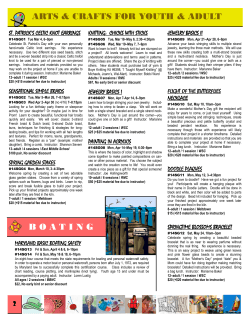
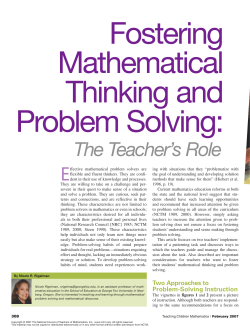
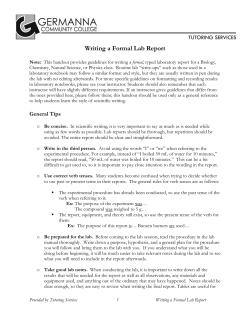
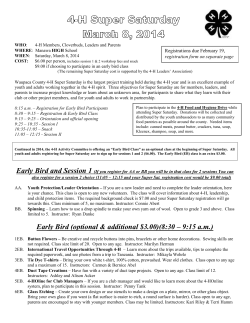

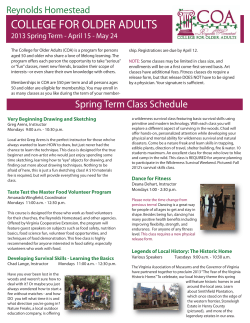
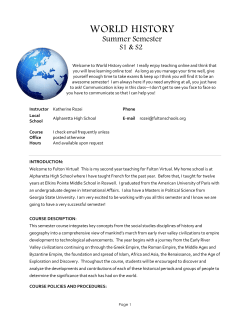
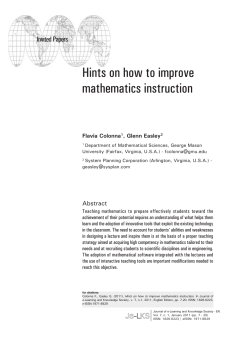
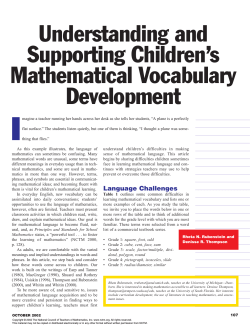
![This article was downloaded by: [Simon Fraser University] Publisher: Routledge](http://cdn1.abcdocz.com/store/data/000214536_1-d186908b582356baad1e25048dce0c49-250x500.png)

